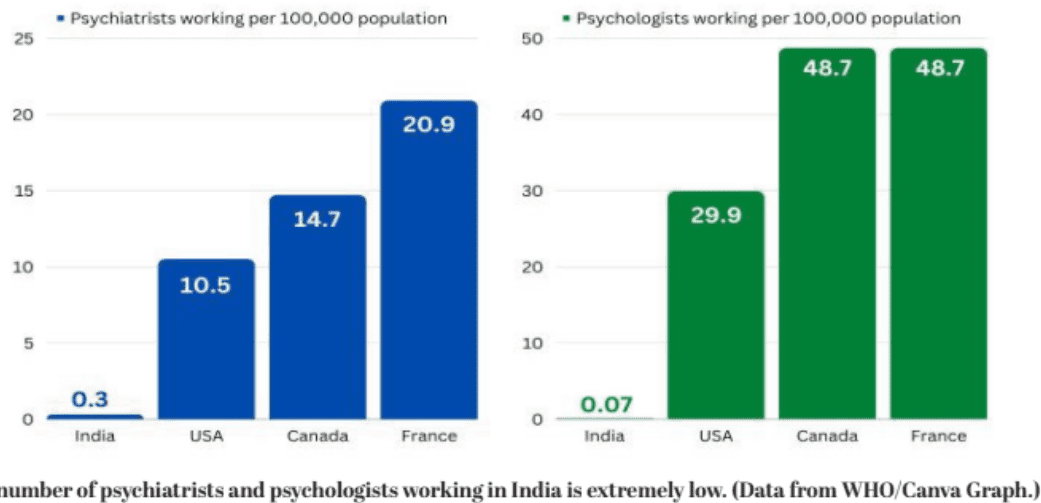
According to a scientific brief published by the World Health Organisation (WHO) on 2 March 2022, the global prevalence of anxiety and depression increased by 25% in the first year of the COVID-19 pandemic. The report enumerated the potential causes for the spike in cases and pointed to the groups of people who were at a higher risk of being diagnosed with such conditions. The report emphasised the need for countries to invest more resources into developing mental health infrastructure in their countries – pointing to the critical fact that on an average, countries spend just over 2% of their healthcare budget on mental health. The Crisis in India The post-COVID mental health crisis has appeared to hit India particularly hard. Access to mental health services has always been a problem as a 2016 National Mental Health Survey found that 83% of people with mental health problems did not have access to effective treatment. The COVID pandemic has exacerbated this issue as cases have skyrocketed, with nearly 10 crore cases of depression and anxiety in 2022. Moreover, India has the highest number of suicides in the world, with nearly 500 lives lost each day in 2021. Suicide is also the leading cause of death for people in the age group 15-39. In 2019, the WHO had estimated that India could lose up to $1.03 trillion from 2012-2030 due to its mental health crisis, a number that is sure to have increased during the pandemic. India is seriously undervaluing the threat, spending only 0.8% of the total health budget on mental health services, while biggest countries spend about 5- 18%. Access to mental health professionals is mostly limited to metropolitan cities. The country is woefully understaffed, with the number of psychiatrists and psychologists working in the country extremely low. The care available is also prohibitively expensive and the people who avail these services usually pay out of pocket due to negligible government assistance. Steps in the Right Direction While government spending on mental health services is still too low, it has been increasing in recent years. There are also several trained community health workers who work in rural areas to try and address depression, anxiety, and suicidal tendencies. The WHO also runs an online training program for community health workers so that they are prepared to offer mental health interventions in different conditions. The government has also announced a National Tele Mental Health program for phone-based counselling services. Devika Kapoor, a practising counselling psychologist based in Mumbai, said, “Not only has there been a change in people’s perception, but also there is an increase in help-seeking behaviour. It is sure that the shared experience of grief during COVID has contributed to this change. However, this change has largely remained in urban and semi-urban spaces while the rural areas have remained somewhat consistent.”
While there is still a very long way to go, there have been steps taken in the right direction.
27 Oct 2022
Ananyanarayan Dhanbalan